
From the Slicer Project Site :
3D Slicer is a multi-platform, free open source software (FOSS) for visualization and image computing.
You may choose to install a pre-bundled "GWE Powered" distribution of Slicer3 or upgrade a current distribution of Slicer3 with GWE Features .
| Products Merged | Link |
| GWE 0.7.3.alpha + Slicer 3.3-alpha-2009-03-01 for darwin PPC | GSlicer3-3.3-alpha-2009-03-01-darwin-ppc-0.7.3.alpha.tar.gz |
| GWE 0.7.3.alpha + Slicer 3.3-alpha-2009-03-01 for darwin x86 | GSlicer3-3.3-alpha-2009-03-01-darwin-x86-0.7.3.alpha.tar.gz |
| GWE 0.7.3.alpha + Slicer 3.3-alpha-2009-03-01 for linux x86 | GSlicer3-3.3-alpha-2009-03-01-linux-x86-0.7.3.alpha.tar.gz |
| GWE 0.7.3.alpha + Slicer 3.3-alpha-2009-03-01 for linux x86 64 bits | GSlicer3-3.3-alpha-2009-03-01-linux-x86_64-0.7.3.alpha.tar.gz |
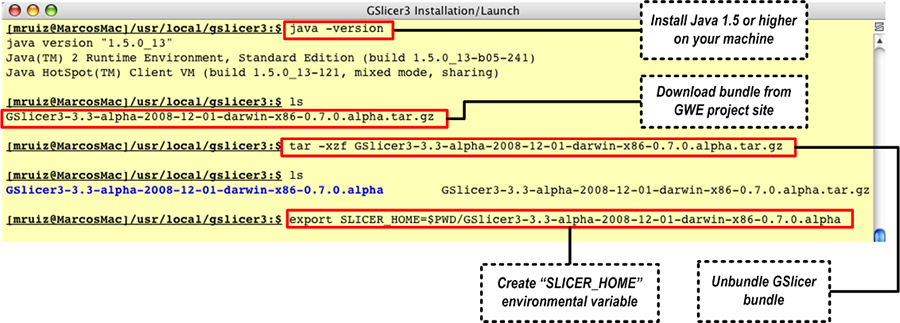
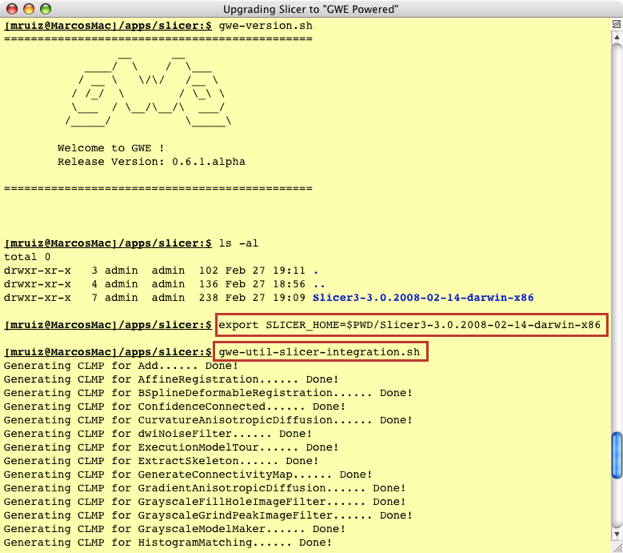
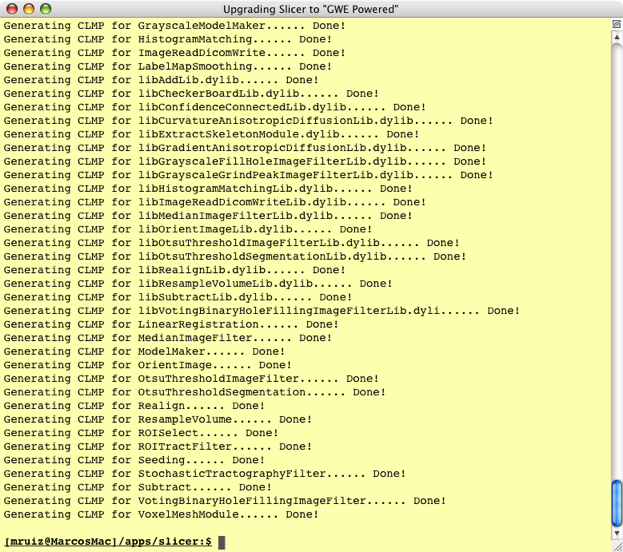
After launching Slicer as usual (invoking Slicer3 executable from an X11 terminal) inspect the modules menu. There you will find all the typical Slicer modules along with their respective dynamic 'GWE Powered Proxys' modules.
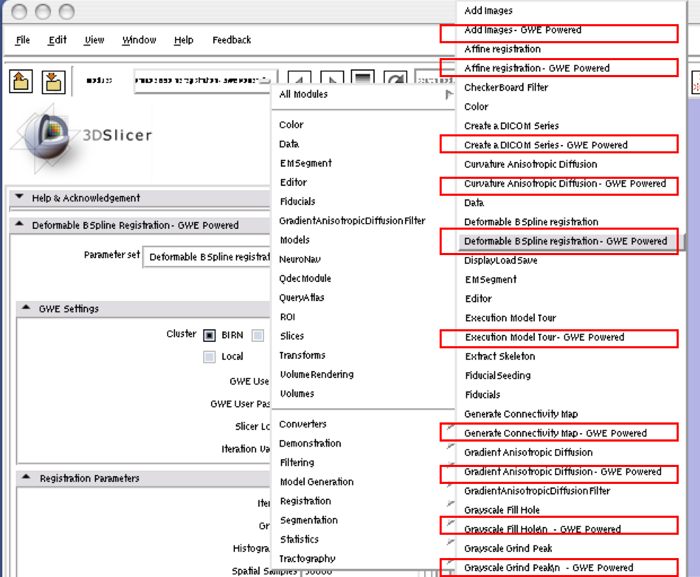
Each one of those proxy modules is a Slicer module which first will capture:
| Field | Description |
| Cluster | The cluster where the Slicer modules should process permutations in parallel, as a radio button choice. |
| Iteration Variables | Global P2EL value space variables . |
Once all this information is entered and the user clicks the Apply button, GWE will execute in parallel this set of invocations, on the cluster selected in the Cluster field and using the Slicer installation located under Slicer Location on such cluster.
All GWE configuration will be read at runtime by Slicer3 and that's how the proxy modules are able to resolve the cluster options to provide in the Slicer UI and the authentication information to use to connect to the cluster; but doing such configuration from within Slicer is not available as of right now, so you have to do that before launching Slicer (as required in the 'Installation Guide' section).
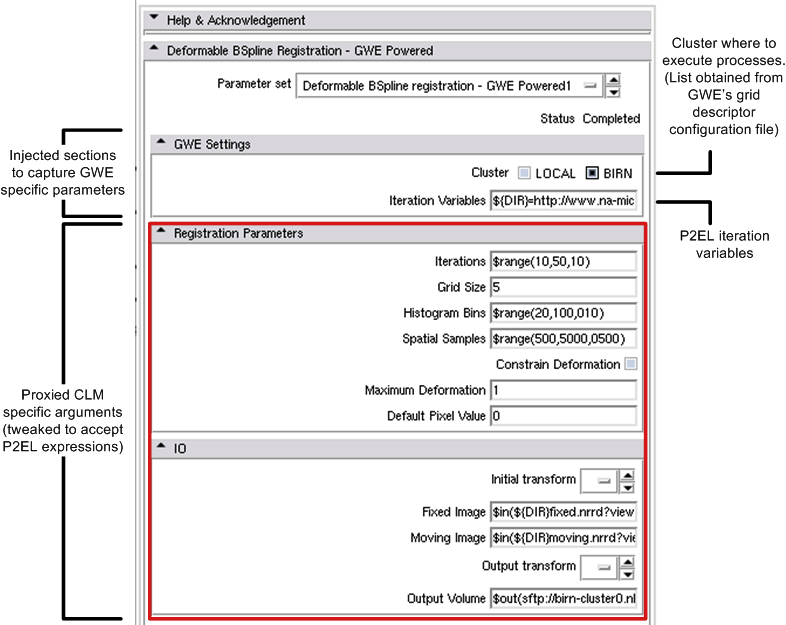
The process of upgrading Slicer3 to GSlicer3 or creating a GSlicer3 bundle carries on the following two tasks:
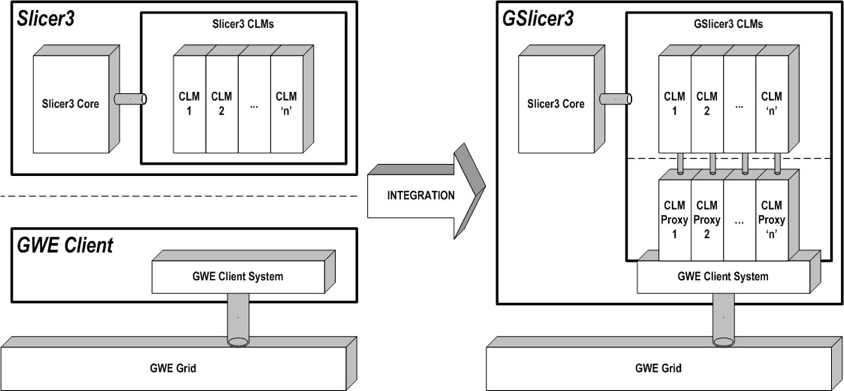
GWE CLM Proxys (CLMP) are CLMs which will proxy into another (proxied CLM) to provide a generalized GWE powered version of the proxied CLM. CLMPs are intelligent agents, which at runtime will:
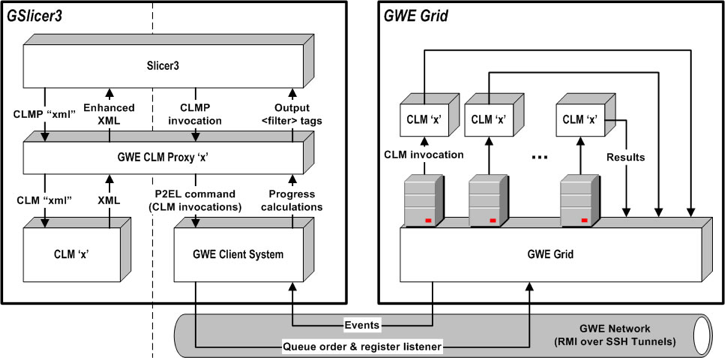
This integration effort will also provide an additional framework to easily build specialized GWE powered CLMs. This framework includes: